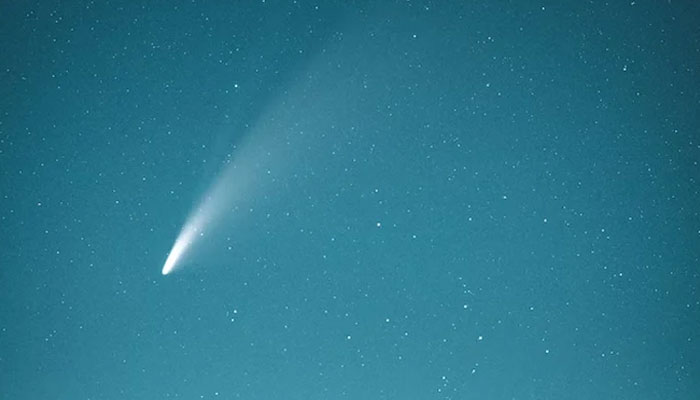Pakistan all set to witness rare Comet A3 with naked eye today
'Comet C/2023 A3' rises around 4:45am when it’s around 3-4 degrees altitude above the horizon
September 29, 2024

ISLAMABAD: Pakistan is all set to witness the rare Comet (Tsuchinshan ATLAS) A3 through the naked on Sunday morning, Space & Upper Atmosphere Research Commission (SUPARCO) confirmed.
Currently, the comet rises around 4:45am and can be seen when it's around 3-4 degrees altitude above the horizon until twilight sets in and it fades into the sunlight around 05:20am.
This comet is currently making the turn around the Sun and has become fairly bright to be visible to the naked eye. Many people across the world have already reported sighting it with the naked eye, including Pakistan.
Space & Upper Atmosphere Research Commission (Suparco) spokesperson Marya Tariq said that the comet, named Comet C/2023 (Tsuchinshan ATLAS) A3, "is going to visit us after 80,000 years as it returns to the inner solar system, just passing a few million miles (25 million miles) from our home at closest approach".
"If you are a night sky enthusiast and an early riser, now is the chance to have a glimpse of this beautiful visitor," the spokesperson said.
To locate the comet, look a few degrees right of east, where the sun rises; one would be able to find it with his naked eyes, given the atmosphere is clear of any haze and the horizon is clearly visible.
The comet will continue to be visible in the morning skies till October 3, and after that, it will start going down towards the Sun until it turns back around the Sun and becomes visible again in the evening sky from October 13 onwards.
As there has been torrential rainfall across most parts of the country, Sunday would be the best day to have a glimpse of this comet.
Sharing the tips for today's viewing, the spokesperson asked to observe it at 12:15am and locate Orion’s belt roughly around East. "It should be around 10 degrees altitude from the horizon, which is quite a fair altitude."
"One must mark any building or any object over the horizon directly below Orion's belt. This is important because this is exactly the spot where the comet will rise," she said.
Comets have been observed by humanity for thousands of years, and it’s only recently that they have been understood and studied in great detail.









